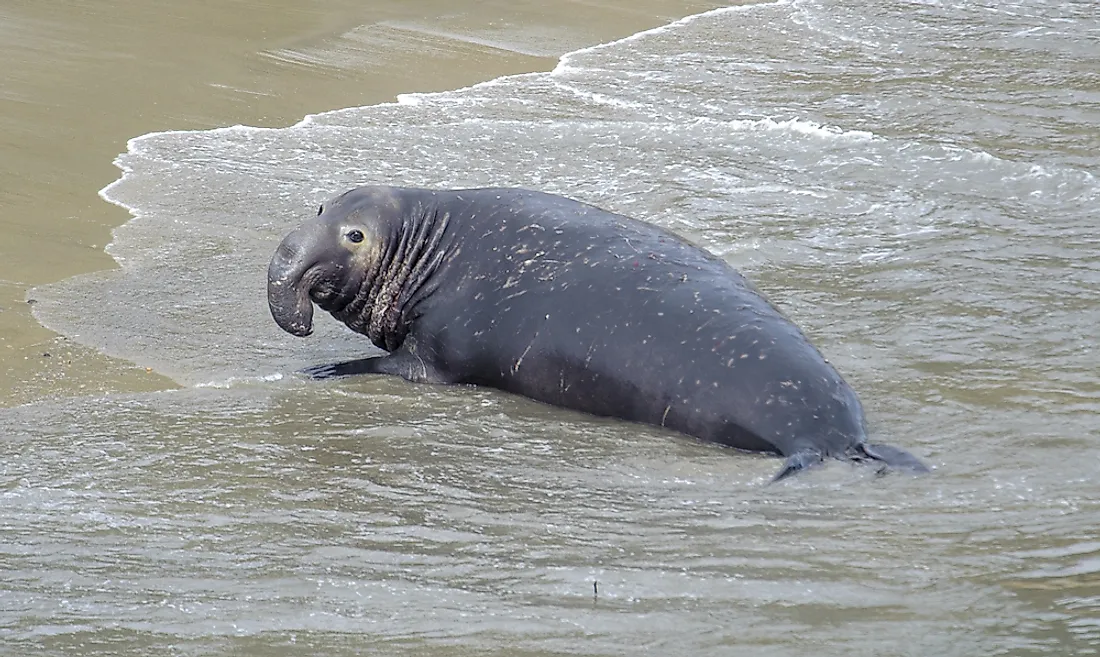Elephant Seal Facts - Animals of the Oceans

The large proboscis, which looks like an elephant trunk, gave the elephant seal its name. This proboscis is found only on males and is for roaring. There are two species of elephant seals, namely the northern and southern elephant seals. Southern bulls reach lengths of 16 feet and an average weight of 6600 pounds. Northern cows have an average weight of 2,000 pounds. Northern bulls have an average weight and height of 5,500 pounds and 16 feet respectively.
Habitat and Range
Northern elephant seals’ habitat runs all the way from the Pacific Coast of three states; Canada, the US, and Mexico. Race Rocks, along with the Pacific Coast, is the northernmost breeding ground. The other species, the southern elephant seal, lives in the Southern Hemispheres and is found in islands like Macquarie Island. Other places it is found include the coast of Argentina, New Zealand, and South Africa. A few of the animals are found in Chile.
Behavior
Seals are aquatic and spend most of their time (around 80%) in the water. The remainder is spent on land. An interesting fact about seals is that they can run faster than a human despite their aquatic nature. Among the seals, females don’t spend a lot of time underwater as compared to the males. Elephant seals can dive to depths of around 7,834 feet.
While they are not mating, elephant seals prefer to stay by themselves. They only come together while mating where their violent behavior is exposed while males are fighting for females. Over the winter, the males do not hunt. Instead, they keep watch over the land territory.
Diet
The seals are carnivorous. Elephant seals eat other aquatic creatures such as eels, rays, fish, crustaceans, squid, penguins, and other creatures. The sensory abilities provided by their whisker and their eyesight assist them in finding food. Males and females hunt differently. The females look for food in the open seas while males look for food at the floor of the ocean. Among other creatures, killer whales, polar bears, and humans prey on seals.
Reproduction
Elephant seals breed during the winter where they come together at their breeding grounds. Females are old enough to reproduce at the age of three to six years while males take longer, five to six years.
Only the alpha or dominant males mate. This status of dominance is achieved at the age between nine and twelve years old. For mating rights, males fight each other. The winner then gets a chance to have a harem which consists of between 30 and 100 female seals. The losers then step away and lie in wait for an opportunistic mating session with one of the females. Sometimes, the losers don’t mate because they are chased away by the victor.
Female elephant seals are called cows. The cows gestate for a period of eleven months and give birth to one pup every year. After birth, the cows then nurse the pups. During that time, for one month after birth, the cows do not eat. In the last few days of nursing, the males and females mate again.











